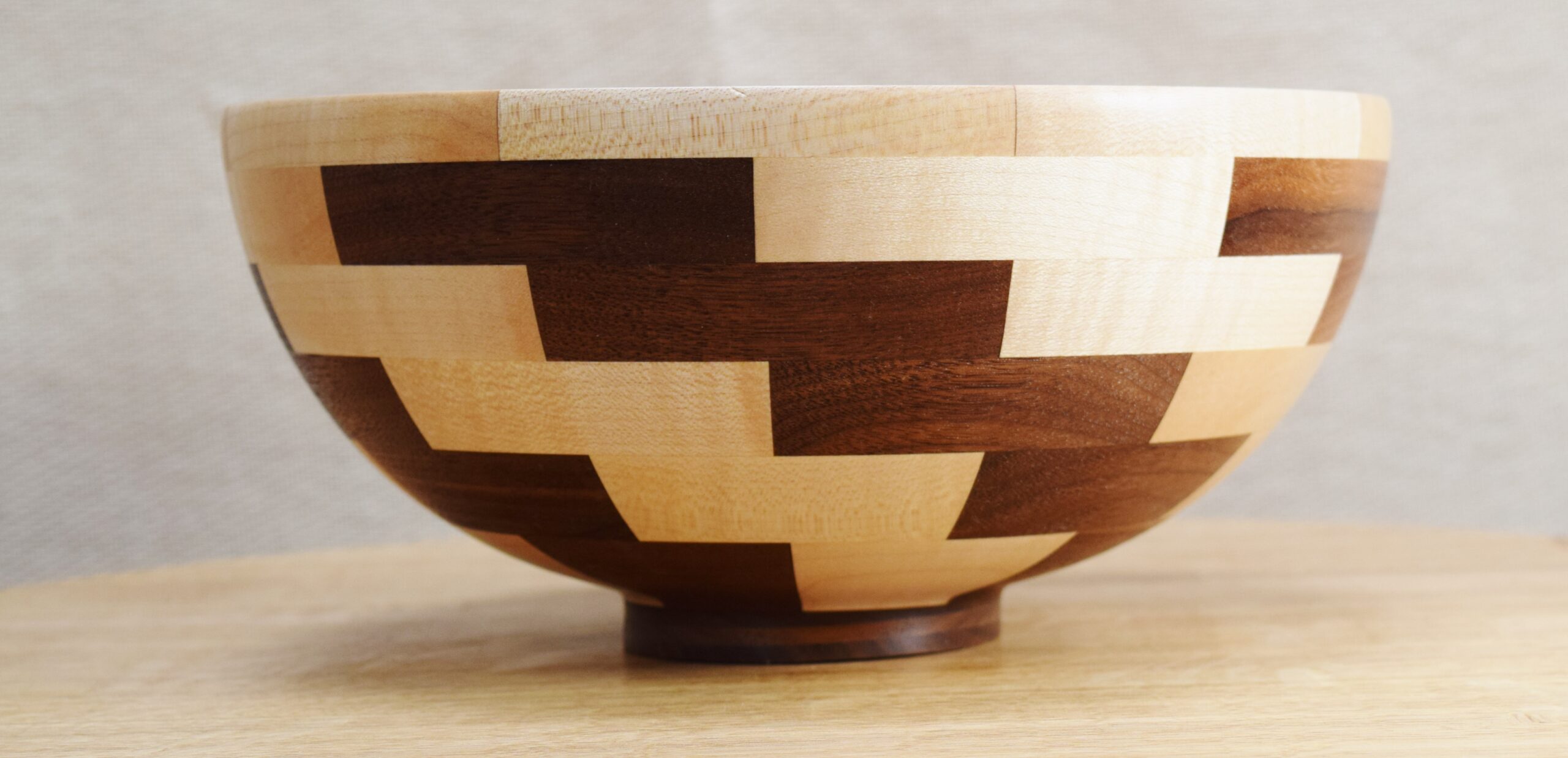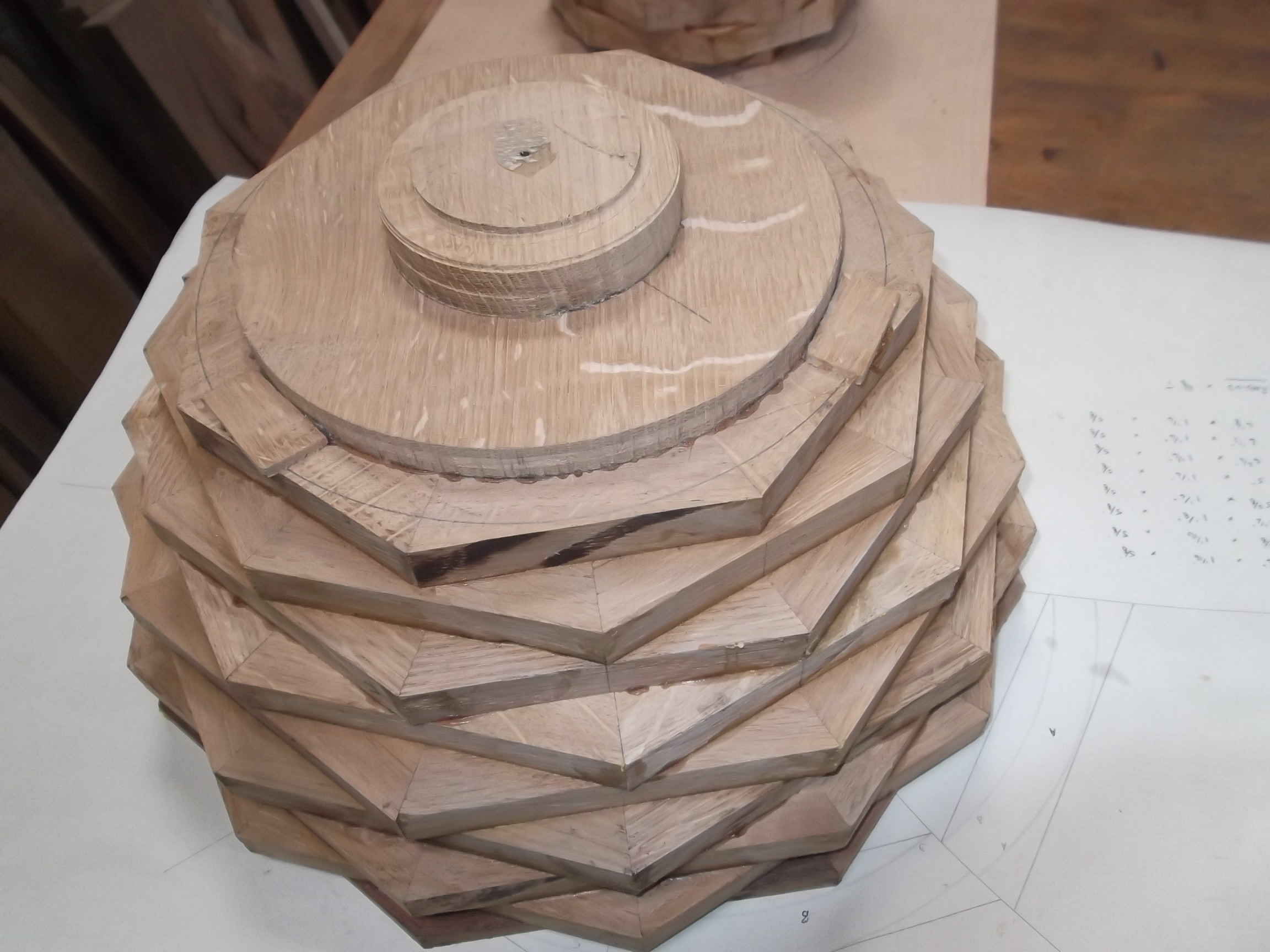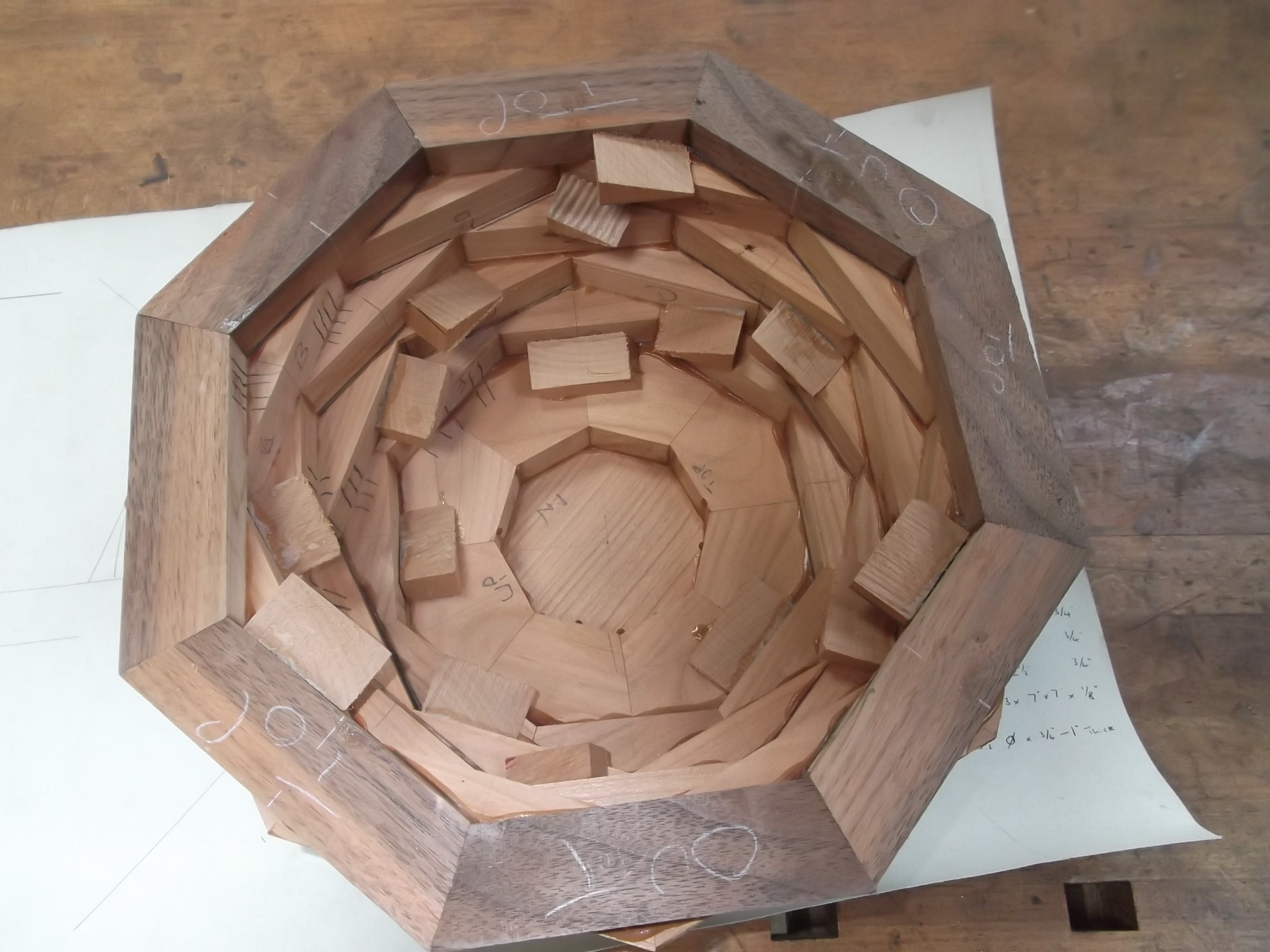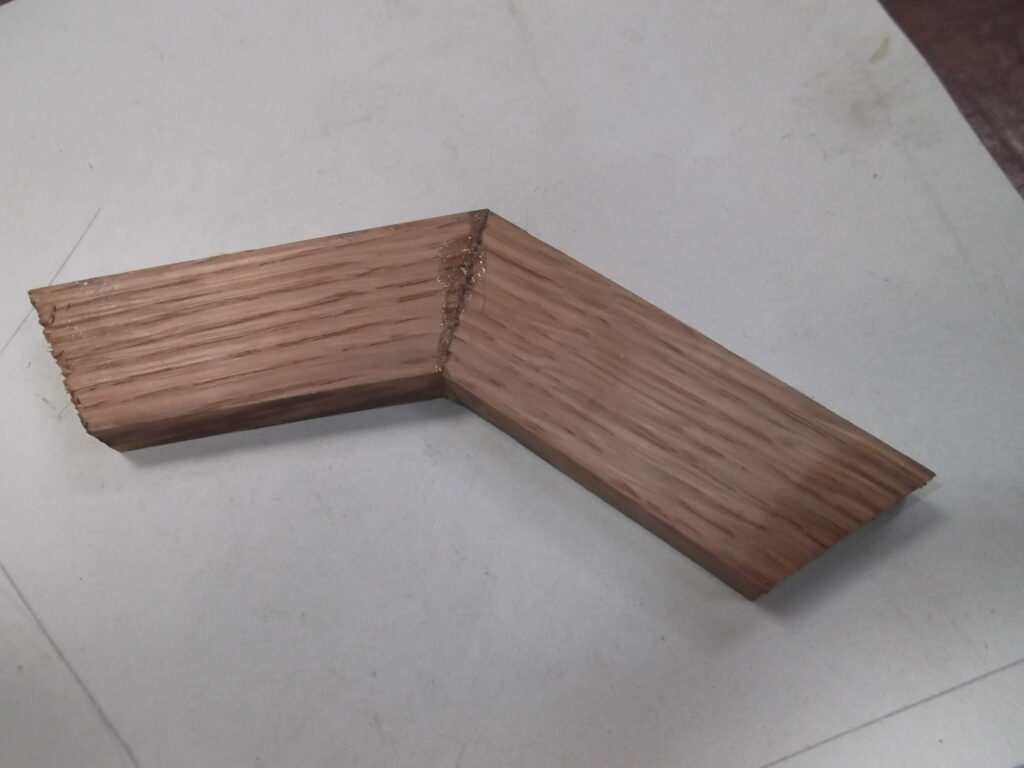SAWCUTS
“Sawcuts” is intended to provide a little bit of insight into “how” pieces are made.
SEGMENTED BOWLS

The finished article
In my gallery you will see what are called “Segmented Bowls”, so-called because of their construction. I make these because they provide a method of creating larger bowls with small wastage, dimensional stability and, of course, their beauty. For those who are interested this is a brief description of how they are made.
If I wanted to make a bowl five inches high, for example, I would create five one inch thick layers. Each layer is an octagon, with each of the eight pieces mitred to match its neighbour. These eight pieces are glued end-to-end to create a single layer/ring. The rings are then glued to the ones above and below them. The bottom is made from three thin sections of wood glued together; the grain of the middle piece runs in the opposite direction to the two outer layers. This is the principle of plywood: thin layers in opposing directions counteract the tendency of wood to move, and then split. The Romans made their shields this way – look at their successes!

Ready to be turned – very slowly!
Once turned the bowl will receive a food-safe finish. The glue which holds the layers together is waterproof so feel free to use the bowls and wash them up. Just remember to keep them in warm (not hot) water for as short a time as possible, and then shake off the excess and allow them to dry away from a heat source. A wipe with an oiled piece of kitchen towel (the cheapest vegetable oil is fine) will help maintain good looks whilst enabling the patina to develop which only comes with usage.
Interior with wooden spacers to aid alignment of rings when gluing


Section of ring